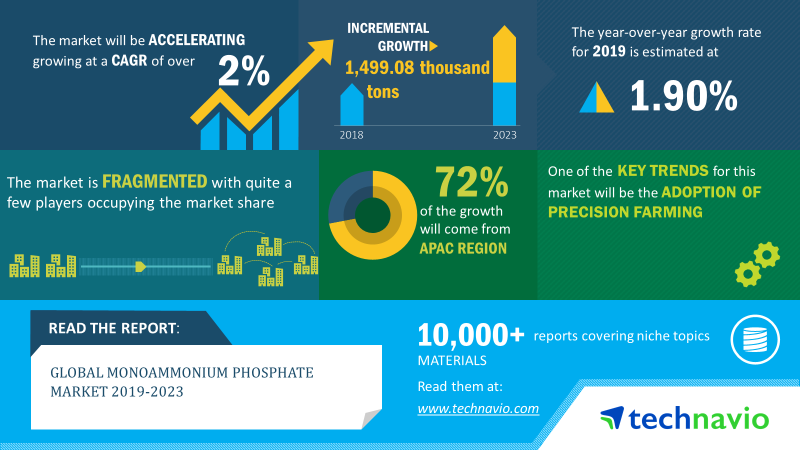How To Use Global Monoammonium Phosphate Market To Desire
Monoammonium phosphate (MAP), also known as ammonium dihydrogen phosphate (ADP), is a white crystalline chemical compound consisting of ammonium cations and dihydrogen phosphates anions in equal proportions.

An increase in the cost of raw material has led monoammonium phosphate vendors to opt for backward integration to reduce operational costs. Backward integration by monoammonium phosphate vendors, including PhosAgro, OCP, and Yara International helps increase their profit margins and gives them the edge. In April 2018, Yara and BASF opened their new ammonia plant in Freeport, US. The new plant is estimated to have a production capacity of 750 thousand MTPA for ammonia.
To produce green phosphoric acid that is used to produce monoammonium phosphate, several innovations and product developments are underway. Innophos offers green phosphoric acid to produce monoammonium phosphate. The low concentration of organic matter, including fluorine, sulfate, and arsenic, makes green phosphoric acid suitable to produce monoammonium phosphate. Hence, the increasing preference for backward integration among vendors is expected to drive the growth of the global monoammonium phosphate market at a CAGR of 2.10% during the forecast period.

An increase in the cost of raw material has led monoammonium phosphate vendors to opt for backward integration to reduce operational costs. Backward integration by monoammonium phosphate vendors, including PhosAgro, OCP, and Yara International helps increase their profit margins and gives them the edge. In April 2018, Yara and BASF opened their new ammonia plant in Freeport, US. The new plant is estimated to have a production capacity of 750 thousand MTPA for ammonia.
To produce green phosphoric acid that is used to produce monoammonium phosphate, several innovations and product developments are underway. Innophos offers green phosphoric acid to produce monoammonium phosphate. The low concentration of organic matter, including fluorine, sulfate, and arsenic, makes green phosphoric acid suitable to produce monoammonium phosphate. Hence, the increasing preference for backward integration among vendors is expected to drive the growth of the global monoammonium phosphate market at a CAGR of 2.10% during the forecast period.
Comments
Post a Comment